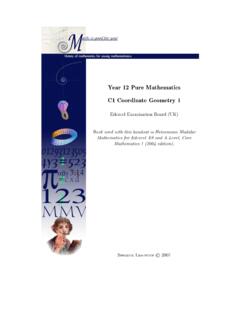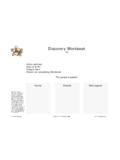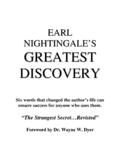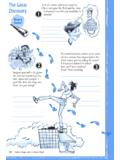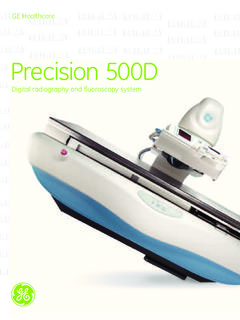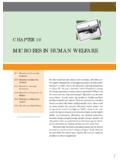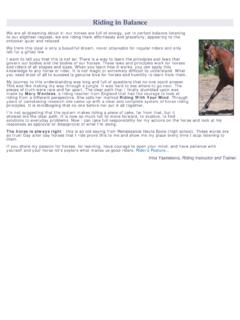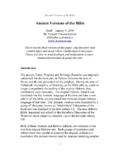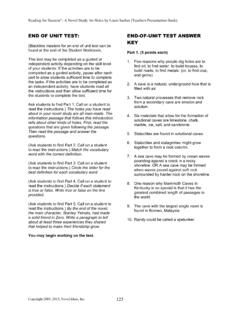Transcription of Year 12 Pure Mathematics ALGEBRA 1
1 year 12 pure Mathematics ALGEBRA 1 Edexcel Examination Board (UK) Book used with this handout is Heinemann Modular Mathematics for Edexcel AS and A-Level, Core Mathematics 1 (2004 edition). Snezana Lawrence 2007 C1 Dr S Lawrence 2 Contents Using and manipulating Introduction number Rationalising the Common 3 rules to Historical notes on Simplifying Factorising Useful Products and Factorisations for Algebraic Common Solving Quadratic Completing the History of the technique known as completing the square ..14 Solving Quadratic Equations using the Quadratic Deriving the quadratic formula - Historical background to the Quadratic Quadratics Curve A short history of Simultaneous Solving one linear and one quadratic equation Historical Quadratic ALGEBRA test Book used with this handout is Heinemann Modular Mathematics for Edexcel AS and A-Level, Core Mathematics 1 (2004 edition).
2 C1 Dr S Lawrence 3 Indices a0=1a!1=1a,andab"#$%&'!1=ba"#$%&'an(am=a n+man am=anam=an!man()m=an(manm=anmam(bm=ab()m ,andab"#$%&'m Examples 1. 2512 2. (!8)13 3. 14!"#$%&32 4. !1()15 5. 70 6. 20!3"25"1 7. 8!13 8. 827!"#$%&'13 Page 3 Ex 1B and page 8 Ex 1F C1 Dr S Lawrence 4 Using and manipulating surds Introduction number sets Real numbers ( !) are all numbers that correspond to some number on a number line (whether whole integers, or decimal numbers, positive or negative). The set of real numbers can be separated into two subsets: rational ( !) and irrational (no sign for them) numbers. All rational numbers can be expressed as fractions of two integers, whereas the irrational numbers cannot.)))
3 Natural numbers are positive counting numbers (1, 2, 3, etc.). They are denoted !. Integers are whole numbers, whether positive or negative, denoted !(and there are two subsets to this positive integers, !+, and negative, !!). Roots that cannot be expressed as rational numbers are called SURDS. Surds are expressions containing an irrational number they cannot be expressed as fractions of two integers. Examples are 2,11,10. When asked to give an exact answer, leave the surds in your answer (although you may have to manipulate and/or rationalise the denominator) as you can never give an exact value of an irrational number. Rationalising the denominator For historical reasons, you need to somehow always get rid of the surd if it is in the denominator (see the historical note on surds).
4 There are several techniques of manipulation you can use. When multiplying or dividing with surds, this may be helpful a!b=a!bab=aba!a=a2=a When you get the expression which looks something like this: 15!2 you need to think how to get the surd in the numerator and have denominator without any surds. So you may want to apply the difference of squares: x!y()x+y()=x2!y2 This can also be applied to the case when one, or both, of the members of the brackets are square roots (or surds): x!y()x+y()=x!y C1 Dr S Lawrence 5 Common mistake Never, ever split the sum or difference of an expression like x+yinto x+y. You can t do that because you have two different numbers in an expression which is of the form (x+y)12.
5 And as with any other powers of expressions within the brackets you can t just apply the powers to the members of the brackets, but you must imagine these bracketed expressions multiplying each other as many times as the power says. What you CAN do is break a number or a product under a root into its factors, some of which will hopefully be numbers that you will be able to take outside of the root. For example, 27=9!3=33 or 8x3=4!2!x2!x=2x2x Examples Express these in terms of the simplest possible surds 1. 10 2. 633 3. 72 4. 98 Page 10 Ex 1G C1 Dr S Lawrence 6 3 rules to If a fraction is of the form Multiply top and bottom by To ca a caa ca+b a!
6 B c(a!b)a2!b ca!b a+b c(a+b)a2!b Examples 1. 125 2. 15+3 3. 1+23!5 Page 11 Ex 1H C1 Dr S Lawrence 7 Historical notes on surds The meaning of the word surd is twofold in Mathematics it refers to a number that is partly rational, partly irrational; in phonetics it refers to sounds uttered without vibration of the vocal cords and so voiceless, breathed . So if you put the two together, you get that surds are mute or voiceless numbers. This is, actually, not a totally loopy statement: as you may know, certain ratios of numbers give pleasing sounds and have been described as far back as the Pythagoras time.
7 Pythagoreans were credited with the discovery that the sound produced by an instrument is defined by the ratio between the length of a string which produced it and the (in some way, for example by pressing a finger against the string) shortened length of that string. So for example one speaks of a major third (4:5), or a minor third (5:6) in music, and this has a mathematical description 4:5 or 5:6. What is important to understand now is the fact that the irrational numbers are also incommensurable with other numbers. Look at the square below: The side of the square is 1, and its diagonal will be 2. As 2is an irrational number, its decimal will never end (and it does not have a repeating pattern).
8 This means that you cannot express the ratio between 1 and 2as a rational number and so you will not get a clear ratio in fact if you attempt to get a sound which is produced from the ratio such as this you will not get a pleasant, clear, sound, merely a shshssssshh of a rather unpleasant quality. In fact, the 2has a rather bloody history to it; it is claimed that the Pythagorean who discovered the property of 2, namely that it cannot be expressed as ratio of two rational numbers, was drowned at sea. This is because Pythagoreans believed that all of the universe can be described through numbers and their ratios discovery that some numbers cannot be described as ratios of two other numbers caused them a great deal of confusion.
9 It is known that Al-Khwarizmi identified surds as something special in Mathematics , and this mute quality of theirs. In or around 825AD he referred to the rational numbers as audible and irrational as inaudible . It appears that the first European mathematician to adopt the terminology of surds (surdus means deaf or mute in Latin) was Gherardo of Cremona (c. 1150). It also seems that Fibonacci adopted the same term in 1202 to refer to a number that has no root. In English language the surd appeared in the work of Robert Recorde s The Pathwaie to Knowledge, published in 1551. Robert Recorde was a famous writer of popular Mathematics and science books, aimed at those people who wanted to learn more of the subjects and could not attend schools: so workmen, merchants and the like bought Recorde s books to learn practical knowledge related to Mathematics or science.
10 Because it is impossible to evaluate surd to an absolutely accurate value, people were in the past (before the calculators and computers) using books which gave calculations of surds to a great number of decimal places. Surds in the denominator could not, however, be calculated in this way, as you cannot possibly exhaust all possibilities on how surds will appear. That is why rationalising the denominator became such a necessary technique. C1 Dr S Lawrence 8 Simplifying Expressions This is revision of GCSE work. Work through the examples on Pages 1, 3 and 4 and complete Exercise 1C and 1D. Factorising Quadratics Expand the expression (3x2!)
